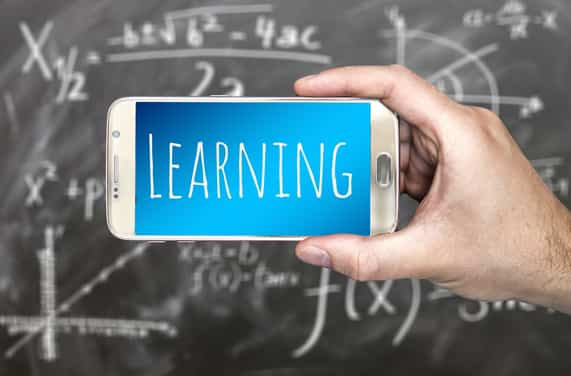

Mobile learning is quite the rage these days. Be it a student or an employee, just about everyone is ready to embrace it with open arms. And why not? They can now listen to podcasts, as and when they want to, read articles on the go, and better still, complete eLearning courses and get their certifications. But the question is, is M-learning really as great as it is made out to be? Or does it have a downside? Well, it does, but then, with a reliable mobile learning solutions provider by your side, you can easily take it in your stride. That said, here are some mobile learning advantages and disadvantages you should know of, especially if you are on the lookout for eLearning content providers:
Advantages of M-learning

Engaging lessons
Custom eLearning solutions are often inherently dynamic. You could get your ePublishing solutions provider to add audios, videos, and images, thereby ensuring that your content is far more engaging, and can disseminate information in an effective way. Goes without saying that nothing holds the attention of the learners like visual content.
Easy accessibility
One of the primary reasons why M-learning in education is becoming increasingly popular is that the students (or learners) are no longer needed to confine themselves to a classroom or follow a set schedule. They are at the liberty to learn at will, and get to benefit from what is commonly referred to as just-in-time learning. Teachers, too, can communicate with the students without any hassle, offer clarifications, and even administer tests for that matter. Also, the eLearning industry has taken to cross-device accessibility pretty well, contributing to faster course completions, and helping the learners go through with their certifications in lesser time. In fact, it’s safe to say that by making the content accessible on multiple devices, eLearning content providers have found a way to cater to the millenials, who prefer to use their tablets and smartphones for learning.
Personalization of learning
A mobile LMS (or Learning Management System) can be easily integrated with other utilities, such as phone-based organizers and reminders, so as to enable the learners to receive and check out the alerts and notifications on the go. Also, eLearning content solutions make it easy to pick up the course right from where it was left off. There is no need whatsoever to unlearn or lose the content already referred to or learned. In short, the learning path is personalized and continuous, which is not the case with conventional learning.
Disadvantages of M-learning
Lack of motivation
A structured classroom or the lack thereof could make all the difference. With no teacher available (home-based learning) for hand-holding and constant supervision, learners may or may not be willing to learn the subject matter on their own. On that note, did you know that according to Statista, 23 percent of employees refrain from using their personal mobile device for work-related learning? Of course, there are barriers at play, ranging from the lack of access to an organization’s M-learning content via personal devices to employees’ somewhat understandable unwillingness to use their data plan. Last but not least, while the bring your own device (BYOD) policy is catching up, it could be seen as a deterrent, a strong one at that, primarily because not everyone owns a mobile device. And even those who do own one, may not necessarily bring along a smartphone, making it nearly impossible for you to offer access to complex eLearning modules with heavy data loads.
Distractions galore

Everyone using a mobile phone has their fair share of distractions. While children are more keen on playing games for obvious reasons, adults too are almost always interrupted, because of text messages and notifications. And these distractions could defeat the very purpose of M-learning, unless the learners have self-discipline and are highly focused. With the global M-learning spending all set to hit it out of the ballpark, and go up to $37.8 billion in 2020, these distractions could very well be a cause of concern. Or maybe not. If you come up with interactive mobile learning solutions, you can easily prevent your audience from going astray.
Low recall value
Mobile learning is often associated with multitasking, which, unfortunately, can take a toll on the retention of the material. Also, there is no “note taking” per se, at least not in its conventional pen and paper sense, which further leads to poor recall. So, the learners may complete the course, so to say, but are unlikely to learn as much as you would them to. Again, this may be a possible downside, but not one that you cannot mitigate. Make sure your mobile learning solutions provider leaves room for a post-training assessment, and you are good to go.
To cut a long story short, technology is a two-edged sword, it always has been, and M-learning is no exception. Well, it does have its share of disadvantages, but the advantages far outweigh them – mobile learning helps bring down the otherwise high dropout rate, can be your best bet if you have been meaning to introduce microlearning, has been known to give collaborative learning a much-needed boost, and is your gateway to achieving higher engagement. Go for it!
We have a wide gamut of ePublishing solutions for you to choose from. Whether you are an STM publisher, looking forward to getting your production and composition needs fulfilled, or a business that could use LMS-related services, either way, we can be of great help. Our comprehensive approach allows us to customize the solutions in tandem with your exact needs. Write to us at info@suntecindia.com, and let’s get started.

